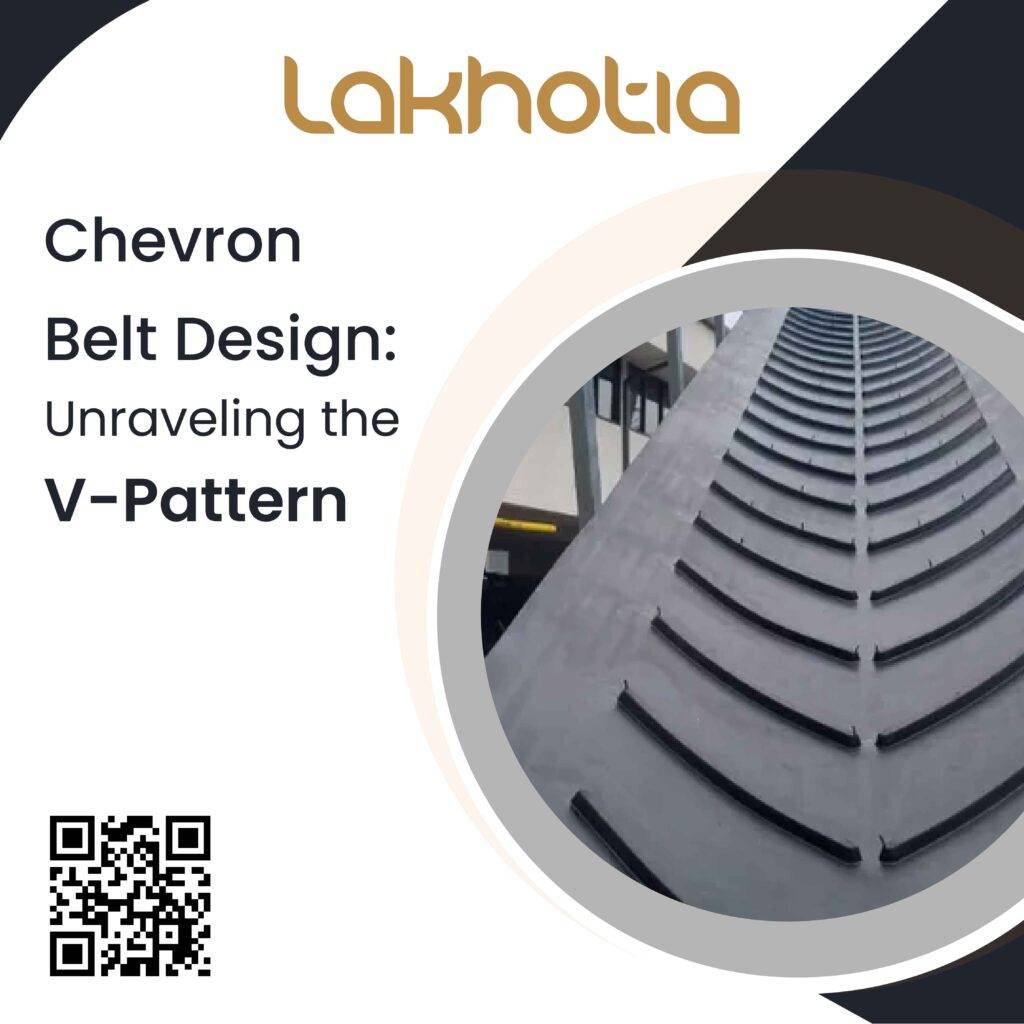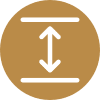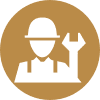The design of Chevron belts, characterized by their distinctive V-pattern or cleats, is essential to their function in preventing material slippage on inclined conveyors. Let’s unravel the key elements of Chevron belt design:

The most defining feature of a Chevron belt is the V-shaped cleat pattern on the belt’s surface.Cleats are designed to provide a high coefficient of friction, ensuring a firm grip on the conveyed material and preventing it from sliding back on an incline.
The height of the cleats is a critical factor in Chevron belt design.Cleat height is chosen based on the material being transported and the degree of inclination. Taller cleats are used for steeper inclines and more slippery materials, while shorter cleats may suffice for milder inclines.
The spacing between cleats is another parameter that can be customized in Chevron belt design.Closer cleat spacing provides greater stability and prevents smaller-sized materials from falling through. Wider spacing may be used for larger, less prone-to-spillage materials.
Cleats can be made from various materials, including rubber, PVC, or other suitable compounds.The choice of cleat material depends on the specific material being conveyed, as well as environmental factors like temperature and abrasion resistance.
The angle of the V-shaped cleats can vary, with steeper angles providing better grip but potentially increasing wear and tear on the belt.The cleat angle should be selected based on the material’s characteristics and the conveyor’s angle.
The overall width of the Chevron belt is determined by the conveyor’s dimensions and the volume of material to be transported.A wider belt can handle larger volumes but may require more power to operate.
Chevron belts are available in different tensile strengths to accommodate various load-bearing requirements.The choice of tensile strength is critical to ensure the belt can handle the intended load without stretching or breaking.
Chevron belts can be customised to suit the specific needs of the material handling application.Manufacturers provide a range of design options and materials, allowing customers to choose the finest configuration for their particular conveyor system and material.
Some Chevron belts are designed with features like fabric reinforcement for added strength and durability. The choice of maintenance features should align with the expected wear and tear in the application.
Depending on the application’s environment, the Chevron belt design may need to account for factors such as temperature extremes, moisture, and chemical exposure.
In summary, Chevron belt design revolves around creating an effective cleat pattern that maximises friction and stability for inclined material handling. Proper customization based on material characteristics, conveyor specifications, and environmental factors is crucial to achieving efficient and reliable efficiency. Manufacturers of Chevron belts provide a range of design options to ensure that the belt is tailored to the specific requirements of the material handling operation. – Lakhotia India Pvt Ltd












